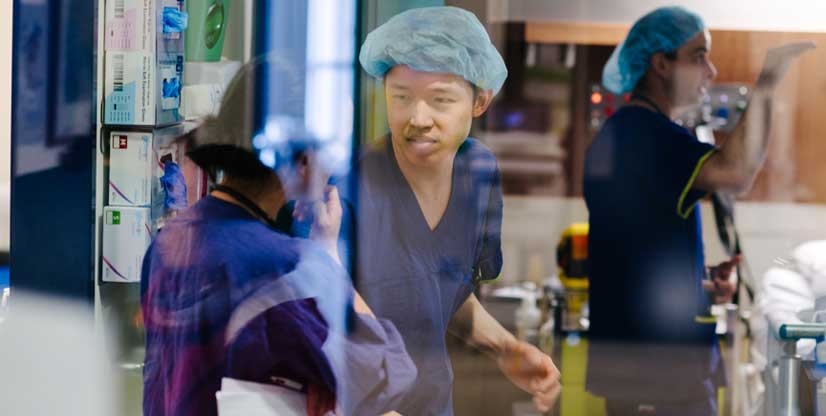About
Austin doctors use rare treatment to change Emily's life
- Home
- About
- Latest news
- Austin doctors use rare treatment to change Emily's life
30 June 2021
A patient with epilepsy has been seizure free since February after undergoing a new and rare treatment that Austin Health doctors hope could eliminate seizures without the need for open-brain surgery in some epilepsy patients.
Austin Health’s Associate Professor John Archer said patient, Emily Rolley, was diagnosed with epilepsy 15 years ago at the age of seven and was previously having seizures multiple times a day.
Emily and John spoke Nine News yesterday about the procedure and the difference it's making in Emily's life - see the story here.
“The treatment was a combination of advanced imaging research of generalised epilepsy, with the novel technique of ‘stereo EEG’ to determine whether Emily’s epilepsy was being driven from a very small part of the brain, before being amplified by the brain’s intrinsic cognitive networks,” A/Prof Archer said.
“A series of very fine ‘wires’, only 0.8mm in diameter, were inserted into her brain to continuously record EEG brain waves.
Through this process, we were able to identify that all of her seizures were being driven from a tiny 7mm area deep in the brain, despite the apparently ‘generalised appearance’ of EEG discharges.
“We then passed an electrical current through the wires to make tiny 5mm ‘burns’ in the area of the brain the driving these seizures.
“This avoided the need for open surgery on the brain and avoided the risk of potential damage to uninvolved brain areas.
“The impact of this procedure has been enormous. Emily has gone from having daily seizures, and seizures almost hourly overnight, to not having a single seizure since she was discharged home more than four months ago.
“Stereo EEG is a relatively recent technique for understanding complex epilepsy and the use of radiofrequency energy to ‘burn’ small areas of the brain for treatment of epilepsy is even more recent, with only a handful of cases performed in Australia to date.
“This successful merging of techniques is even more rare again,” he said.
The procedure was completed in two parts with Emily under a general anaesthetic while the wires were inserted but then fully awake while the electric current was used to make the burns on her brain.
“I couldn’t actually feel the wires but what I could feel was tightness because the doctors had to make sure the wires were held in place,” she said.
“You slowly get used to it in a way because I was in hospital for almost two weeks while I was being monitored before the burning procedure.
“But then the burning part only took about 30 seconds.
“I could hear sounds in my head a bit like when the lolly ‘Pop Rocks’ explodes on your tongue. I got a bit of a fright the first time but then it slowly calmed down.
“The seizures have fully gone which I just couldn’t believe. I still don’t believe it but I feel awake and feel a different person.
The support from John, the nurses, neurologists and other staff at the Austin has been amazing.
“I just can’t thank them enough,” Emily said.


